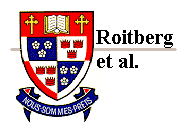
B.Sc., M.Sc.
Shrum Science B6226
Office: 604-291-4512
Fax: 604-291-3496
Susan Senger

B.Sc., M.Sc.
Shrum Science B6226
Office: 604-291-4512
Fax: 604-291-3496
My research focuses on the dispersal behavior of the cherry fruit fly (Diptera: Tephritidae) in structured environments.
Executive Summary:
The cherry fruit fly, Rhagoletis cingulata (Diptera: Tephritidae), is an economically important pest in cherry orchards in British Columbia. The damage caused by the larvae renders the fruit unmarketable and infested fruit cannot easily be sorted out. No organic control methods have been developed for this pest, rendering organic cherry orchards inoperable once the fly invades. More information on the dispersal potential of the cherry fruit fly in different agricultural and ecological settings is needed to determine what new opportunities for control exist. This project will examine the spatial and temporal patterns of cherry fruit fly dispersal and will specifically elucidate flight propensity, distance and direction of flight, and the effects of host deprivation on dispersal behavior. Through the cooperation of the community of Lillooet and the Shuswap Thompson Organic Producers Association, this project will provide essential information that can be used in developing an overall fly control strategy for cherry growers.
Outline of my Research:
In 1996 cherry flies were introduced into backyard cherry trees in Lillooet BC (approx. 4 hours drive north east of Vancouver) and the flies began invading new territory. I believe that stepping up to the landscape level may provide new understanding of how spot infestations of insects result in population spread, and this may in turn lead to new mitigation strategies for this pest.
My research takes a 3-phase approach:
1. How does the landscape structure influence population spread?
2. Which trees do flies stay in or leave from?
3. What factors influence a cherry fly’s propensity to fly?

Last updated Oct 28/2003